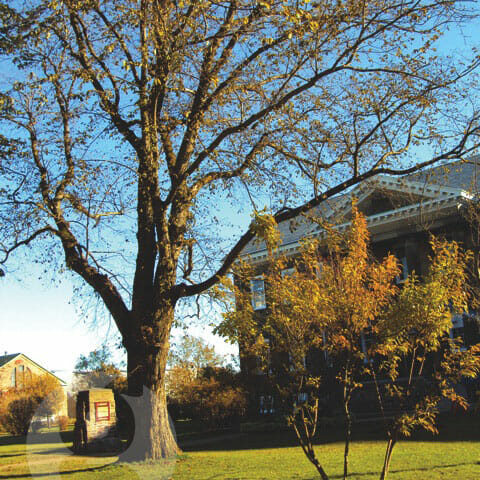
Students have say in Dal greenery
First-year grad student Stephen Cushing is conducting a survey to get input from students on the future development of Dalhousie’s natural landscape.
The Dal Urban Forest Values Survey is part of a larger project that will be used in creating the very first Dalhousie University Urban Forest Master Plan. The plan will be used when developing future facilities and infrastructure, making sure the trees and shrubs on Dal campus are considered part of the equation.
Dal’s “urban forest” includes all trees and shrubs found within campus boundaries, including the Carleton, Sexton and Studley campuses. Cushing’s survey aims to find out what students, faculty and staff value about these trees and shrubs, and what they hope to see on campus in the future. Their responses to the survey will directly affect the Master Plan, which will be drafted by December.
“Part of talking to people is to make them aware of what we’re doing, and to keep that consciousness out there,” says Cushing, a graduate student in the school for resource and environmental studies. He says that even if students don’t do the survey, it’s important that they’re aware of what’s going on.
The survey asks questions to find out what characteristics students value most in the natural landscape on campus, such as “How strong is your connection to urban green space?” and, “How long do you spend outdoors on campus (on a typical day)?” The Master Plan project also includes interviews and focus groups to provide information on urban forest values.
Peter Duinker, professor and director of the school for resource and environmental studies, says the university needs a plan for the tree canopy on campus, or else no one will really be satisfied with the way trees are treated. Duinker is the leader of the Dalhousie Urban Forest Master Plan project.
“We need to look at the campus plan over the next 20 or 30 years, and make sure that we put trees in now that’ll be safe through the building process. And if we don’t do the campus tree plan, that simply won’t happen,” says Duinker.
Cushing says they want to find a balance between infrastructure development and the trees on campus. The Urban Forest Master Plan will be given to developers so they will know what the university wants to see done with the trees, and can keep that in consideration when making building plans.
“To have spaces where we can learn in a healthy way, not a concrete jungle, I think would aid our leaning,” says Jamie Arron, the DSU VP (student life) and a fifth-year at Dal.
Arron thinks that Dal has become a leader in green initiatives, especially with the College of Sustainability.
“Personally, not speaking from a DSU perspective, but from an individual perspective, I think it’s really important that we’re practicing what we preach, and that we’re creating an environment that’s actually reflective of what we’re learning.”
While there are many student groups working on environmental issues on campus, such as the Environmental Programs Student Society and SustainDal, Arron says he thinks a lot of these student groups don’t even know about the study.
Cushing says that while the survey has only been going for a few weeks, participation has plateaued.
“I know not everyone thinks about [trees] all the time, but I want to know what you do know, or not even what you know, but what you like.”
To complete the survey, or for more information, visit https://surveys.dal.ca/opinio/s?s=12696.







